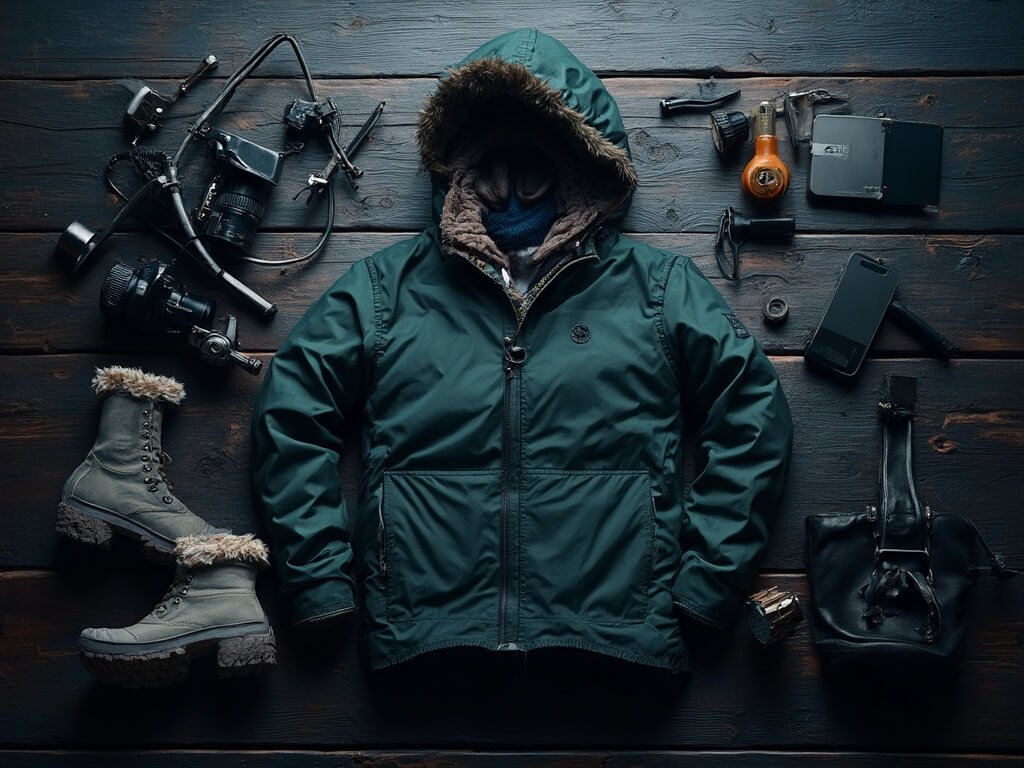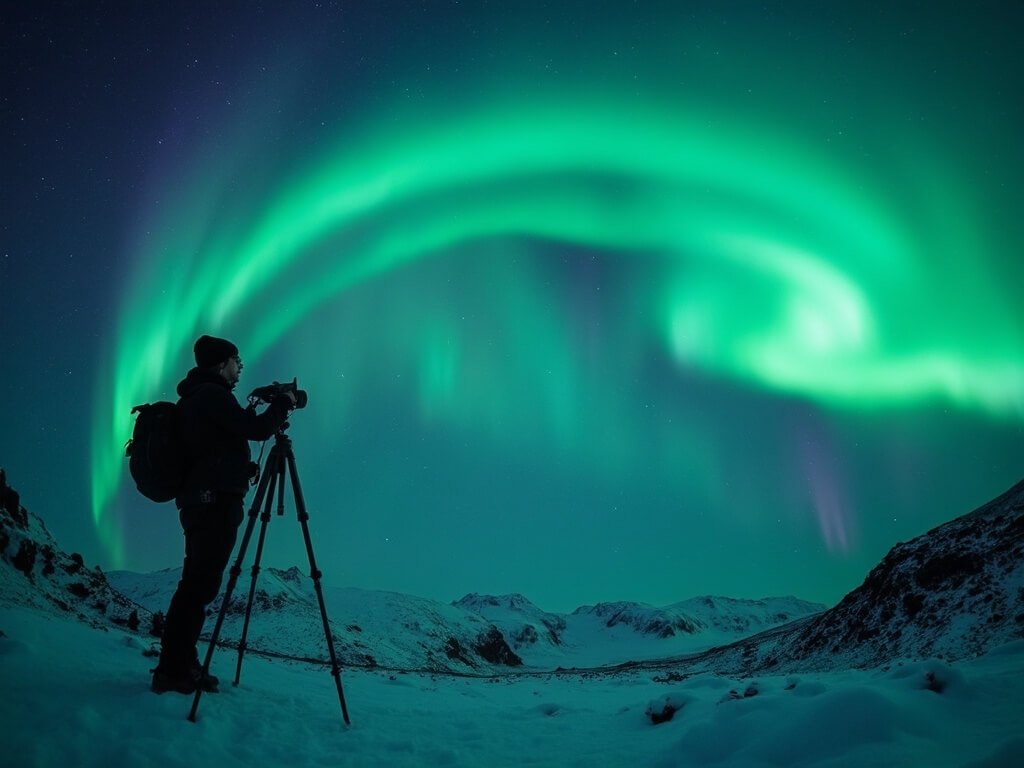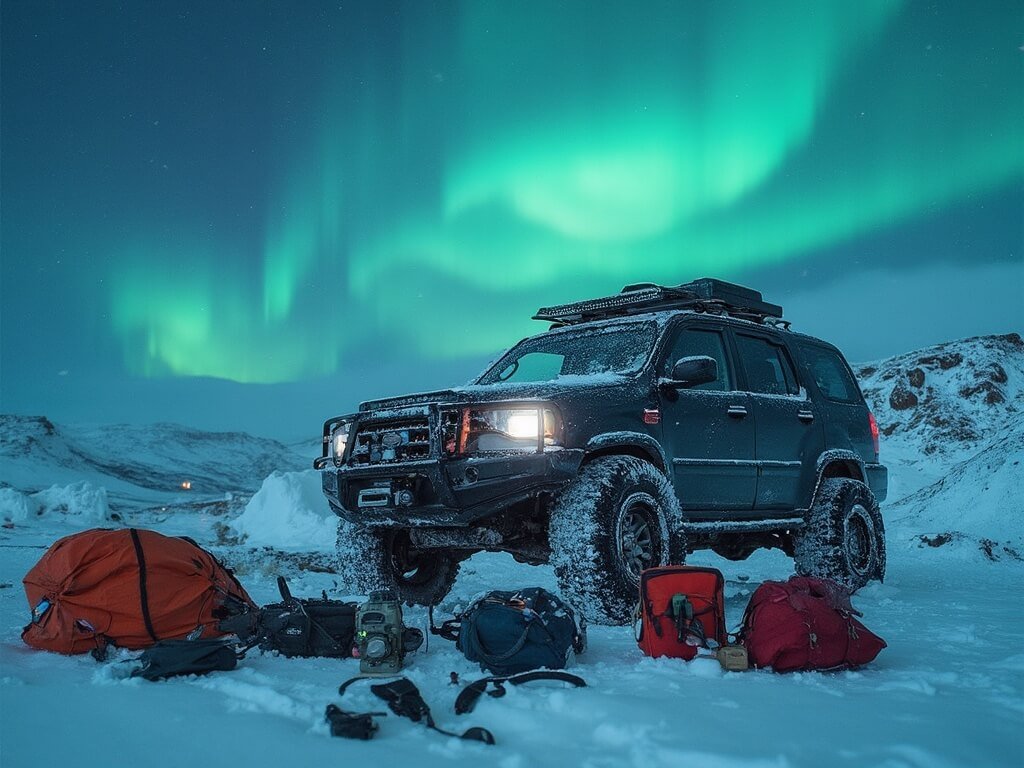Have you ever dreamed of witnessing the most mesmerising natural phenomenon on the planet? The Northern Lights in Iceland aren’t just a travel experience – they’re pure magic.
What Exactly Are the Northern Lights?
Picture this: invisible solar particles dancing across the Earth’s magnetic field, creating breathtaking ribbons of green, purple, and blue light that paint the night sky. This is the aurora borealis – a cosmic light show that turns the darkness into a living canvas.
Iceland sits perfectly positioned in the “northern lights belt” (65–72°N), making it arguably the world’s premier destination for aurora hunters. Why? Three critical ingredients:
- Minimal light pollution
- Proximity to the Arctic Circle
- Consistently active aurora zones
When Can You Actually See the Lights?
Not all winter nights are created equal. The prime Northern Lights season runs from late August to mid-April, with November to February offering the darkest, most promising conditions.
Pro tip: The sweet spot is between 10 pm and 1 am. But don’t set your watch in stone – auroras are unpredictable divas of the night sky.
Crucial Viewing Conditions
Want to maximise your chances? You’ll need:
- Pitch-black skies
- Zero cloud cover
- Active solar particles
- A healthy dose of patience
I remember my first aurora chase in 2019. Bundled in three layers, standing in -15°C near Thingvellir National Park, I’d almost given up hope. Then suddenly – a faint green shimmer erupted across the sky, transforming the landscape into something otherworldly.
Top Locations for Aurora Hunting
Some absolute must-visit spots include:
Accessible Locations:
- Grótta Lighthouse (minimal city light)
- Thingvellir National Park
- Jökulsárlón Glacier Lagoon
- Snæfellsnes Peninsula
Remote Gems:
- Þórsmörk highland wilderness
- Raufarhöfn and Arctic Henge
- Icelandic Highlands
Hunting Strategies: Tour or Solo?
Two primary approaches, each with pros and cons:
Guided Tours:
- Expert local knowledge
- Safety guaranteed
- Rebooking if no lights appear
- Less planning stress
Self-Drive:
- Total flexibility
- Potential cost savings
- Requires serious preparation
- Higher planning complexity
Essential Gear and Preparation
Your aurora survival kit should include:
- Thermal, windproof layers
- Robust winter boots
- DSLR camera with manual settings
- Sturdy tripod
- Aurora forecast apps
- Thermos of hot coffee (trust me)
The Northern Lights aren’t just a visual experience – they’re a full-body adventure that demands respect, preparation, and a sense of wonder.
Temperatures can plummet, roads can become treacherous, and the lights themselves are frustratingly unpredictable. But when that first green ribbon starts dancing across the sky, you’ll understand why people travel thousands of miles for this moment.
Winter in Iceland isn’t just a season – it’s an invitation to witness one of nature’s most spectacular performances. Your preparation, patience, and sense of adventure will determine whether you become a spectator or a true aurora chaser.
Want to know the most strategic ways to maximise your Northern Lights experience? Keep reading, because the most critical insights are just ahead.
Explore more magical destinations:
Photography: Capturing the Aurora’s Ethereal Dance
Want to immortalize your Northern Lights experience? Photography isn’t just recommended – it’s an art form.
Most amateur photographers make a critical mistake: showing up unprepared. Your smartphone won’t cut it here. You’ll need:
- DSLR or mirrorless camera
- Wide-angle lens (14–24mm recommended)
- Tripod for long exposure shots
- Manual camera settings
Pro Photographer Settings:
- ISO: 800–3200
- Aperture: f/2.8–f/4
- Shutter speed: 5–15 seconds
- Manual focus set to infinity
During my 2020 Iceland expedition, I watched dozens of tourists fumble with equipment while the aurora performed. The difference between a stunning shot and a blurry mess? Preparation and practice.
Understanding Aurora Forecast Technology
Modern technology has transformed aurora hunting from mystical chance to calculated strategy.
Key Forecast Tools:
- Spaceweather.com
- Aurora Alert apps
- Icelandic Meteorological Office website
- Local tour operator tracking systems
Pro Tip: Don’t just check weather. Solar activity matters dramatically. High geomagnetic activity increases aurora probability exponentially.
Safety: The Unspoken Aurora Hunting Challenge
Iceland’s winter isn’t a joke. One wrong move could transform your dream trip into a survival scenario.
Critical Safety Considerations:
- Check road conditions hourly
- Rent 4WD with winter tires
- Pack emergency survival kit
- Always inform someone of your route
- Carry extra communication devices
- Learn basic winter driving techniques
Sustainable Aurora Tourism: The Ethical Dimension
As aurora popularity explodes, responsible travelers must consider environmental impact.
Sustainable Practices:
- Choose eco-friendly tour operators
- Minimize vehicle emissions
- Respect local ecosystems
- Support conservation initiatives
- Use designated viewing areas
- Practice “leave no trace” principles
For more ethical guidance, explore the Northern Lights in Iceland article for responsible travel tips.
Beyond the Lights: Holistic Icelandic Winter Experiences
Pro travelers understand aurora hunting isn’t just about lights – it’s about immersion.
Complementary Experiences:
- Ice cave exploration
- Glacier hiking
- Geothermal spa relaxation
- Traditional Icelandic cultural encounters
- Wildlife photography
- Hot spring discoveries
Expand your adventure with ideas from the Ultimate Guide to Chasing the Northern Lights.
Budget and Planning: Maximizing Your Investment
Strategic travelers know success requires smart financial planning.
Budget Breakdown:
- Guided Tour: $100–$250/person
- Self-Drive: $300–$500/day (vehicle + fuel)
- Accommodation: $150–$400/night
- Camera Gear: $500–$2000
- Additional Expenses: $50–$150/day
The Psychological Aspect: Managing Expectations
Here’s brutal honesty: You might not see the lights. And that’s okay.
Mindset Strategies:
- Treat aurora as bonus, not guarantee
- Enjoy Iceland’s other magnificent experiences
- Stay flexible
- Maintain positive attitude
- Understand natural phenomena are unpredictable
Final Recommendations: Your Aurora Roadmap
- Plan 3–5 night minimum stay
- Book flexible tours
- Bring proper equipment
- Stay patient
- Embrace the entire experience
Conclusion: Your Northern Lights Adventure Awaits
Iceland’s aurora isn’t just a light show – it’s a profound connection with Earth’s most mysterious natural phenomenon.
Whether you’re a seasoned traveler or first-time adventurer, the Northern Lights promise an experience beyond imagination. Prepare thoroughly, approach with wonder, and let Iceland’s magical skies tell their story.
Your Northern Lights in Iceland journey starts now.
Explore More Travel Inspiration:
- Wander the Streets of Prague, Czech Republic
- Discover the Charm of Charleston
- Cruise Through the Florida Keys
- Explore the Historic Streets of Savannah
- Small Wedding Ideas












